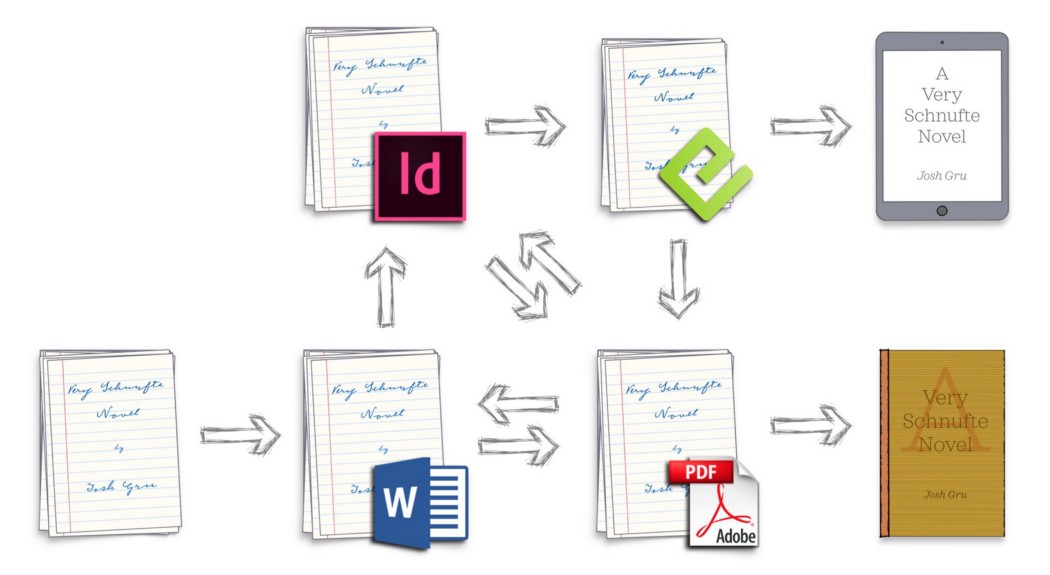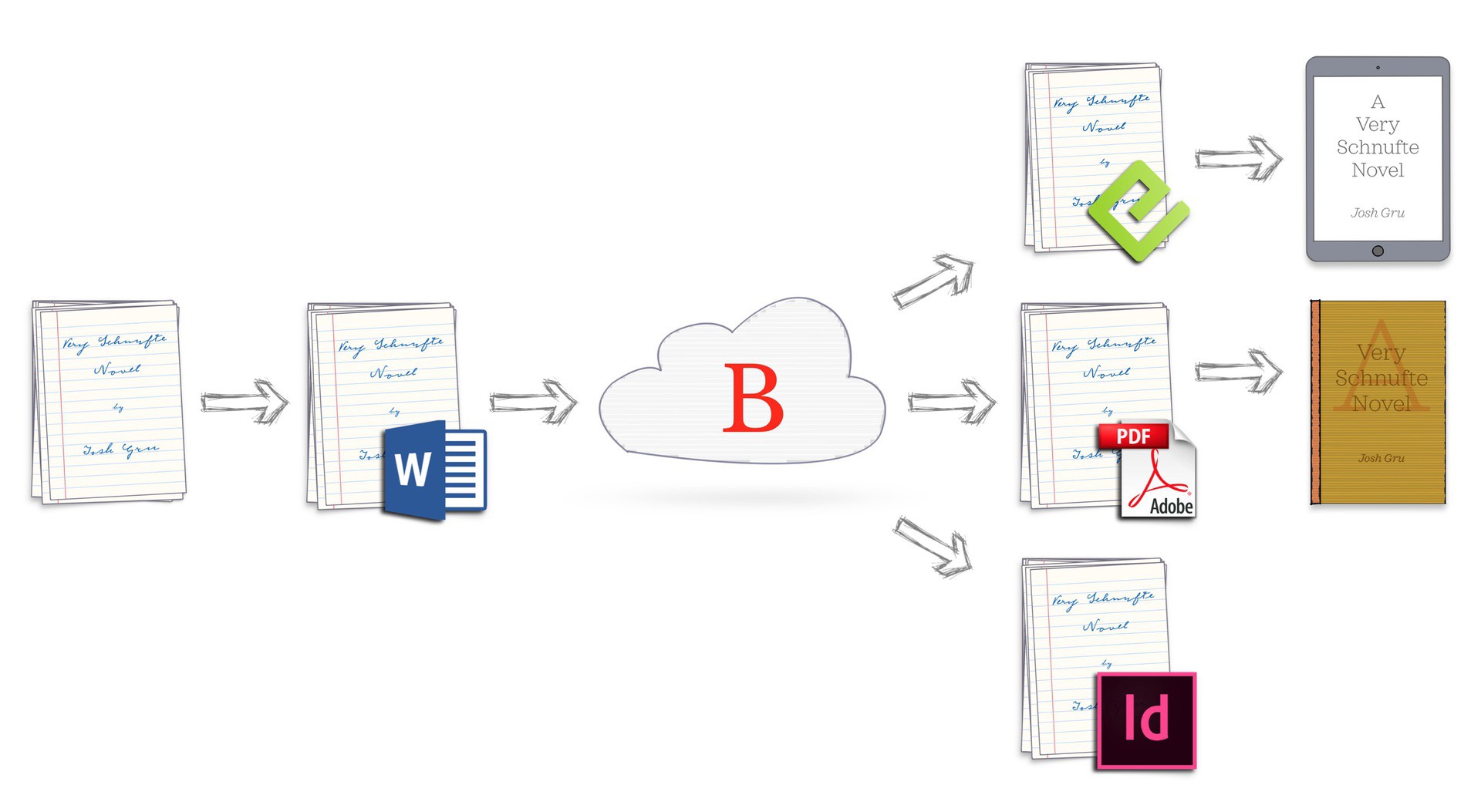The Need for Intelligent Tools in Publishing
If you’re a book designer like me, you’ll understand a familiar frustration.
You love books and want to enjoy the creative process of actually designing one.
Then you receive a new manuscript, and you get stuck doing other things: checking the content of the document and cleaning up its structure and formatting, eliminating the clutter or cruft that editors and various bits of software leave behind, and maybe even pondering accessibility information.
When I talk to publishers or freelancing designers, I often hear colorful stories about the convoluted paths that a manuscript can take through a book production workflow.

Even when using software that promises some degree of “automation”, workflows like these are typically sluggish and can demand intensive manual labour. To add insult to injury, books produced via these workflows are sometimes poorly designed (if they’re designed at all), and ebooks are commonly invalid and lacking in accessibility information.
Of course, these steps play out differently depending on the particular publisher, freelancer, or person who’s building the book.
But whatever the workflow, many of us are all too familiar with content that’s ultimately far from ready for creative input.
Convoluted and manual workflows can quickly become a source of frustration and, when time is money, expensive inefficiencies.
Here are some questions for you.
Where does your workflow consume most of its time and effort? Where are most of the resources spent, and where are frustrations created? What aspects feel a bit off or onerous? And when does your workflow not deliver what you want and need?
Intelligent tools and automation
My ongoing motivation for developing Bookalope’s suite of tools comes from what I want to focus on when I embark on working with a newly delivered manuscript—being creative.
But Bookalope’s tools are also about what I don’t want to do.
I don’t want to check on spelling, punctuation, and typographical nits. I don’t want to clean up and structure content. I don’t want to deal with internal editing residue. And I don’t want to grapple with the old, unsupported, or otherwise unsuitable file formats that customers might send me.
So, wouldn’t it be nice if these glitches could be smoothed out or eliminated altogether, absorbed by intelligent tools that do automatically what I don’t want to do?
But what do I mean by “automation” and “intelligent tools” here?
Different folks understand “automation” in different ways. Moving from writing on paper to using a word processor may mean “automation” to one user; pushing authors into designed templates or spending hours tagging paragraphs and cleaning up a file so that a software tool may finally consume it may mean “automation” to another.
To me, however, automation means being able to take a break and walk away from the computer and let it do its thing.
By this definition, then, using software in and of itself doesn’t mean we’ve automated a workflow or solved the difficult problems that make up a publishing workflow. Nor does it mean we’ve streamlined the process of building a book or guarantee that we can scale that process to hundreds or thousands of books.
In my view, “intelligent tools” should typically solve large and complex problems as independently as possible, and they should minimize the amount of manual labour required of me. They should do so reliably in a way that helps me to easily control and integrate these tools into existing workflows.
Sadly, in the real world, software cannot always be the magic wand we want it to be. But it still can get us a great way towards where we need to be.
The Bookalope tools are implemented as a service that’s accessible through standard web technology — so-called cloud REST interfaces. Because of that, they scale to large numbers of requests, and they can be incorporated into any existing software that accesses the internet.

As I said earlier, Bookalope does the stuff I don’t want to do.
More importantly, though, Bookalope strictly separates the content of a book from the content’s visual presentation for the target media.
So, it takes a manuscript fresh from a customer and analyses its visual styling and the text content. The custom-built AI classifies the text content’s structure using visual clues and cues, then Bookalope strips the entire document clean so that only the semantic structured content remains. In doing so, it fixes heaps of different content issues as well.
And, it does all that pretty much automatically in just a few minutes.
Once Bookalope has finished with its content processing, I can choose how I would like to proceed. I can download a finished ebook or print book with a simple default styling. Or, I can roll up my sleeves and indulge in designing the book myself. No matter which target medium I now choose, I can rest assured that its content is clean and fixed, consistent, structured, and ready to go.
And ultimately, that’s what intelligent tools are all about.
(This post is a summary of my presentation at Digital Book World 2019.)